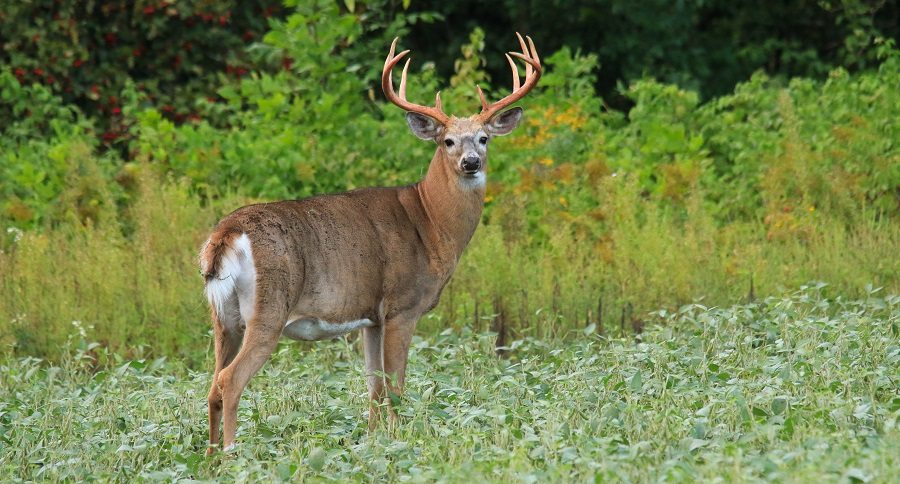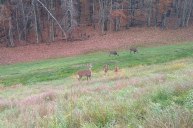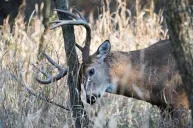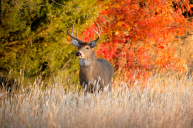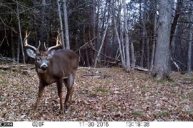A mock scrape takes little effort, but can pay BIG dividends this deer season.
Spoiler Alert: I'm not a hunter. Have never shot a deer nor any animal for that matter. What I am is a wildlife photographer with a passion for shooting whitetail deer with the camera, and with that, spending hundreds of hours in the woods each season studying the behaviors of this favorite animal of mine.
Much like a hunter, I rely on trail cameras to give me an idea of deer in the areas I frequent, and during the fall months, the timing of the rut. And since I utilize public land that is off-limits to hunting, I am able to test out strategies and tactics to see if they are valid for drawing deer into specific spots.
One I have experimented with over the last few years is mock scrapes.
A scrape and licking branch work in tandem. A buck will often begin the 'scraping process' by rubbing his forehead, preorbital, and nasal glands on a hanging branch four to six feet high. He will then paw at the earth directly below this branch, clearing leaves and debris away to expose fresh soil. To complete the scrape, he will then urinate in this spot while rubbing his tarsal glands together.
This series of behaviors is done in order to leave liberal amounts of scent in a specific area.
The debate is ongoing whether a buck does this to attract does or to simply mark his territory while proclaiming his dominance. Many biologists believe the latter to be true.
A buck will routinely visit his scrape in order to freshen it up. And he will have many in his home range. So by positioning your stand adjacent to an active scrape, you can increase your odds for harvesting a buck on your hit list.
Here's what you need to know:
Construct a mock scrape at the edge of a field, trail, or open area adjacent to a ridge or path bucks funnel through in. Find a branch that is approximately at eye level, and immediately below it, scrape away the dirt with a stick or the heel of your boot.
Make the scrape approximately 2.5 by 3 feet in diameter. It is imperative not to leave any of your own scent behind, so wear latex gloves and spray your boots with a liberal amount of a 'no scent' product.
If legal in your state or province, douse the scrape with a synthetic buck scrape starter or urine. (Here in Ontario we are allowed to use synthetic scents.)
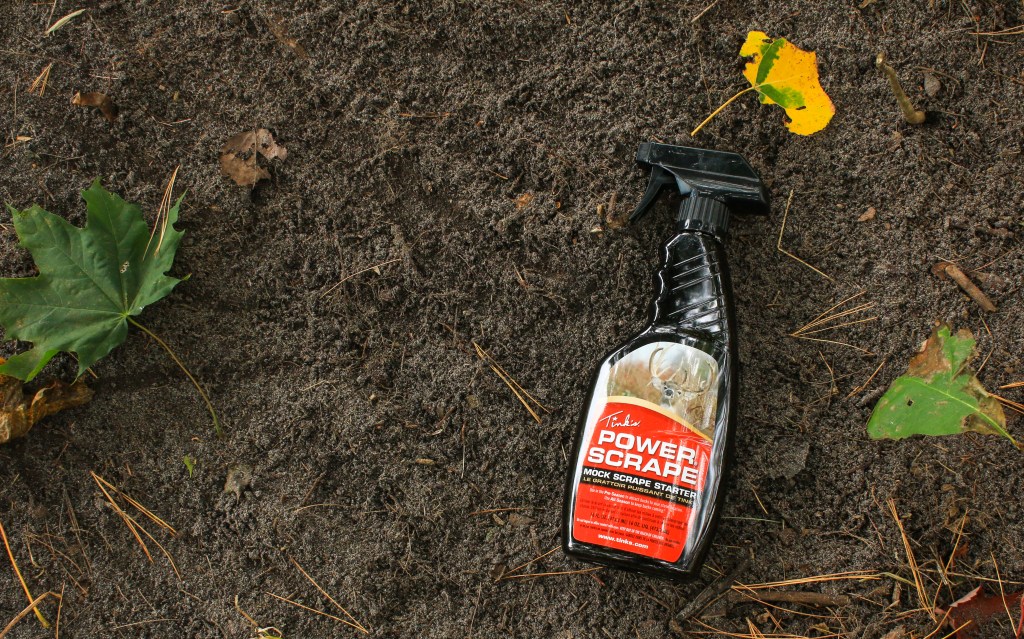
You can also attach an active licking branch from a scrape you have found over your mock scrape. I do this often, simply using a zip tie to attach the branches. And yes, it works like a charm.
Here are a few trail camera videos that show bucks coming into mock scrapes and licking branches I have made over the years.
The proof is definitely in the footage:
The following footage was shot at the end of September, which is a little early for the rut, but I figured I'd see what a mock scrape might attract. As you're about to see, it worked as a magnet for a wide range of animals.
https://youtu.be/H—m7x8R-LI
Give mock scrapes a go this season. They definitely work, and could help you harvest that buck of a lifetime.
Happy deer hunting!
Did you enjoy this post? CLICK HERE to view more articles by Justin Hoffman. You can also check out his Photography Site Justin Hoffman Outdoors, as well as follow him on Facebook Justin Hoffman Outdoors, Instagram hoffmanoutdoors, Twitter @HoffmanOutdoors, or subscribe to his YouTube channel Justin Hoffman.
NEXT: EPIC DRONE FOOTAGE SHOWS EDGE-OF-YOUR-SEAT BATTLE BETWEEN MOOSE AND WOLF
https://rumble.com/embed/u7gve.v3v4j9/
